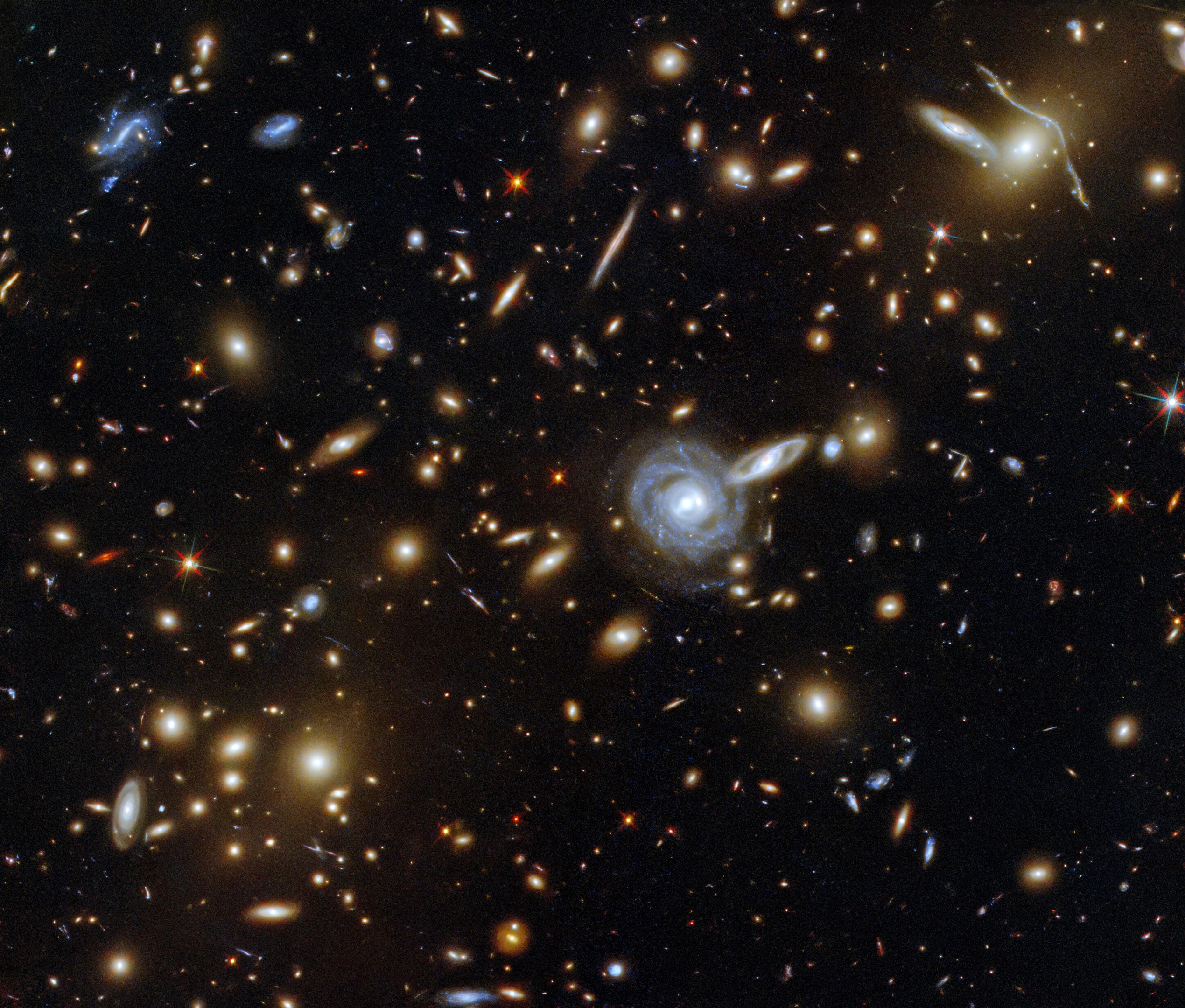NASA’s Hubble Space Telescope, a sentinel of the skies, has delivered yet another awe-inspiring breakthrough in the exploration of the cosmos. Astronomers have announced the identification of a galaxy uniquely marked by nine striking concentric rings, a phenomenon never before observed in cosmic records. Named the Bullseye galaxy, or LEDA 1313424, this giant structure showcases the profound influence of intergalactic collisions on the architecture of the universe.
Located approximately 567 million light-years away in the constellation Pisces, LEDA 1313424 stands apart as an astronomical rarity. Unlike typical galaxies, which often exhibit spirals or elliptical structures, the Bullseye’s rings represent an empirical archive of a celestial encounter. Through a combination of meticulous observations with the Hubble Space Telescope and subsequent analysis using the Keck Cosmic Web Imager, researchers have confirmed the extraordinary features of this galaxy.
The nine visible rings are a record-breaking feature. Previous observations of collisional ring galaxies rarely exceeded two rings. These celestial circles form as a result of a smaller galaxy, identified as a blue dwarf, hurtling directly through the Bullseye’s core. This collision, which occurred approximately 50 million years ago, mirrors the dynamics of a droplet hitting the surface of a calm pond, generating ripples that extend outward in every direction. Over time, the stars in these rings have begun forming and coalescing, showcasing a vibrant interplay of cosmic forces.
At the heart of this groundbreaking discovery is the impact caused by the blue dwarf galaxy, described as a “cosmic dart.” The trajectory of this dwarf galaxy was essentially a straight shot through the midsection of LEDA 1313424, resulting in shockwaves that propagated outward with intense energy. These ripples are not merely aesthetic phenomena but critical markers that illustrate how galaxies interact, disrupt, and eventually evolve through such high-energy events.
Through Hubble’s high-resolution imaging capability, the inner workings of the Bullseye galaxy became evident. Scientists observed eight rings using Hubble and confirmed a ninth using advanced spectral analysis from the Keck Observatory. Each of these rings consists of star-filled regions, some still experiencing active star formation, leading to an exceptional diversity of stellar populations.
Beyond its visual appeal, LEDA 1313424 serves as a natural laboratory for studying galactic dynamics and evolution. Such collisions are often considered violent and destructive, yet they also create opportunities for new star formation, reshaping galaxies and their ecosystems. The Bullseye galaxy exemplifies how such collisions can yield not only loss but spectacular cosmic regeneration on a massive scale.
Additionally, this discovery has significant implications for astrophysical models. The ripple effects seen in LEDA 1313424 can offer clues about the nature of intergalactic gravitational interactions, the behavior of dark matter during such encounters, and the process of structural evolution among large galactic systems. These insights can help scientists refine existing simulations of galaxy formation and draw connections to the broader cosmic web that links galaxies across the universe.
The observation of this record-breaking nine-ring galaxy marks a milestone in astronomical research. Such findings may help decipher a significant fraction of cosmic history, relating specifically to how collisions shaped the current structures we observe in the universe. While LEDA 1313424 may be categorized as a unique marvel now, it serves as a reminder that similar events have likely occurred throughout cosmic history, albeit hidden from view by the vast distances and eons of time separating us from those events.
As NASA and global astronomy networks continue to push the boundaries of space observation, there remains much to learn from these singular discoveries. The Bullseye galaxy is perhaps only the beginning of a deeper understanding of the transformational power of intergalactic collisions. Equipped with the tools provided by Hubble and other observatories, astronomers may encounter further phenomena that challenge our perceptions of the cosmos.


